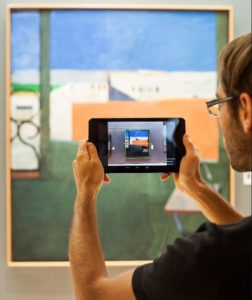
There is a constant flow of information and articles about arts, culture in response to the digital environment we increasingly live in. The New York Times recently published a special section on the Visual Arts, which included an article titled Museums Morph Digitally. The article speaks to decisions now widely being made by museums to allow visitors to use their digital devices, and indeed to encourage their use. It is part of a transformation of how museums present permanent collections and exhibits, a recognition that people live both in a physical, and a digital world – they embrace a physical experience of seeing a work of art, and share/retain that experience digitally.
Digitizing Collections
As well, we see museums and art galleries making efforts to make their collections more accessible through a process of digitizing all works. Remember that only a very small portion of a museum collection is ever on display at any given time. One of our client funds provides grants to support efforts to make collections more accessible to the local community and to visitors.
Digital technology, the article says, is being used to provide supplemental information about an artwork, and can be delivered directly to a smartphone. Technology is also used for conservation and research. For example, 3D scanning allows online viewers of a physical work to be seen from angles not possible in an image, and sometimes at the institution itself- think of a very large object ( a dinosaur at the ROM, or very large sculpture at an art gallery ). The purpose of technology is to give the viewer more access points into an artwork, as if someone is personally guiding the viewer through the painting or sculpture.
The Opening Up of a Range of Viewing Choices
The old view that putting images online would harm museum attendance has shifted to the opposite – “…when people can see artworks online, it is a taste and they want to see more, often in person..” It is not a shift to a ‘technology’ rules environment… rather creating a range of viewing choices for the visitor…letting the content determine what we do and how we use technology or devices in ‘low tech’ or ‘high tech’ way.
The New York Times article is a good read, and indicative of forward thinking.
